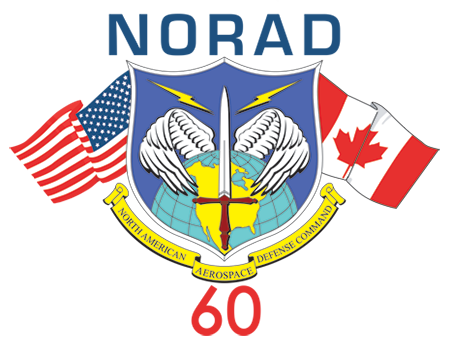
May 12, 2018 marked NORAD’s 60th anniversary.
Pursuant to last February’s Biden–Trudeau virtual summit, defense heads from the US and Canada reaffirmed on August 14th that NORAD (North American Aerospace Defense Command) modernization is an integral part of North American homeland defense. In coping against the growly complex security threats posed by strategic competitors’ technologically advanced weapons, such as hypersonic glide vehicles, the two neighboring nations put forward stronger “coordinated investments” in upgrading the early warning and surveillance capabilities of the North Warning System (NWS). In particular, the upgrade plan prioritizes the installation of next-generation over-the-horizon radar and an all-domain multi-layered sensor network for enhanced “situational awareness.” These priorities will essentially be accompanied by the installation of efficient data-processing tools and a resilient communication network system, paving the path for “modernized joint command and control systems.” The two neighboring nations’ commitment to NORAD modernization promises a brighter future of “maintaining North America as a secure base for active engagement around the world,” especially in the upcoming era of constructively inevitable great power competition.
Bolstering U.S.–Canada security cooperation through NORAD modernization was one of the cornerstone agendas discussed in the Roadmap for a Renewed U.S.–Canada Partnership, which was the fruitful product of the Biden–Trudeau virtual bilateral summit last February. What lies at the crux of the revitalization of the 63-year-old defense pact in a timely manner is the operational concepts of SHIELD (Strategic Homeland Integrated Ecosystem for Layered Defense). The strategic initiative focuses on cultivating a new generation defense ‘ecosystem’ of continental defense in areas of ‘domain awareness,’ ‘Joint All-Domain Command and Control(JADC2),’ and ‘defeat mechanism.’ Domain awareness proposes to integrate data from both existing NSW/maritime sensors and new sensors into a central repository of a multi-layered sensor network, instead of letting each sensor type gather data in a single platform. The multi-layered aspect of the system allows the augmentation of its detection and surveillance capabilities by adding layers of a globally operating sensor network, such as a space-based radar sensor network. Through ‘JADC2,’ integrated data are then processed with boosted global interconnection and interoperability among all military domain (Army, Air Force, Marine Corps, Navy, Space Force and Cyber Command) in the form of a cloud-connected platform, providing real-time cloud-based/AI-powered data analytics critical to key decision-makers’ optimal decision-making capability, or ‘decision superiority.’ Finally, the defeat mechanism takes a cost-effective approach to prevent the unnecessary field allocation of global forces by focusing on key areas of North American continental defense. Simply put, hardening the SHIELD means strengthening detection, deterrence, and defeat capabilities by equipping key decision-makers with cutting-edge threat/risk assessment capacities through a globally interconnected/interoperable all domain ‘single pane of glass.’ In this way, key decision makers can strategically think of situationally feasible deterrence/de-escalation/defeat options ahead of their adversaries. SHIELD aligns with Secretary of Defense Lloyd Austin’s recent call for the Department of Defense’s renewed concept of deterrence, ‘Integrated Deterrence,’ which aims to enhance the security readiness and resiliency of the Alliance in coping against systematic security challenges posed by strategic competitors. The basic logic of integrated deterrence is to elevate cold-war era ‘deterrence by denial’ to a new level by “denying adversaries the ability to threaten the global connectivity on which we all rely on.”
NORAD Modernization Means a Vast Array of New Opportunities for Canada
Despite its costly price tag, if met with the right, and futuristic, PPP (Public Private Partnership) solutions, NORAD modernization can provide Canada with a vast array of new opportunities. It will not only nourish related defense technologies, notably quantum computing, machine learning, data analytics, and AI, in which Canada is already one of the global leaders. But its side-benefits will also politico-economically leverage Canada’s global engagement practices, especially in the Arctic. Indeed, it was mentioned in the defense head joint agreement that NORAD modernization includes “investments to upgrade and modernize the infrastructure required to support robust NORAD operations, including in our Arctic and northern regions.” When it come to the Arctic in the upcoming era of great power competition, Canada needs stronger North American Arctic leadership to facilitate incrementally sustainable development of the Arctic (which meets the indigenous populations’ and locals’ politico-economic demands). Under the current political climate, it could probably start from rare earth mineral development and accrued Artic fleets to secure the supply chain routes.